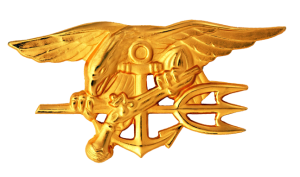I’ve decided to invent a new series of non-controversial flags for all 50 states of the United States of America.
I began with a plain white flag. Not much to be controversial about there. (By the way, I was not the first to think of that.)
Then I proposed adding to each state flag the two letter state identifier used for our postal system. We’ve been using those for decades, so again, no controversy.
For instance, the Florida flag would be white with FL in the middle of it. If the state is really proud of itself, it could be a big, bold FL. If they’re a little embarrassed by, oh I don’t know, crime rates, hate crimes, voter apathy, or whatever, they could use smaller letters, and maybe not bolded. The voters could decide.
But voters would not get a choice on the overall design. Two white letters on a pure white background – that is the state flag formula.
Of course I tried this idea out on a focus group made up of mixed gender identity, mixed ethnic, educational level, and mixed financial levels. I even took care to keep the test group evenly divided among political parties.
And that’s when the trouble began.
Unfortunately there were many, many complaints, but I’ll only mention some of the more interesting ones; all based oddly enough on the Periodic Table of the Elements.
Take my state of Florida or example. FL stands for Florida of course, but the “F” in it represents the element Fluorine, a chemical which I believe has strengthened my teeth since childhood. But some believe it is a toxic chemical dumped into our water supply by all levels of government, (county, city, state and federal) to poison Americans. [Google it. I will not provide a link to those websites.] I’m highly skeptical of that notion, but I wouldn’t want to offend them by forcing them to look at “Fl”uorine on their flag.
And then there’s Florida’s neighboring state, Alabama. AL can stand for Alabama, but it also is the symbol for aluminum. Aluminum is cheap and not very strong. Some Alabamians don’t like that word association, even though it’s been on their U.S. mail since 1963.
AR for Arkansas also means Argon, a narcotic gas. Some didn’t want to be associated with stoners.
GA for Georgia is also gallium. Gallium melts at approximately body temperature, which was too troublesome of an association for those who are still pained by Sherman’s March to the Sea through Georgia. A melting-in-the heat mineral connotes weakness, which Georgians certainly don’t want their flag suggesting.

CA for California, also stands for calcium, a component of lime, which is basically crushed limestone. Water and carbon dioxide react to form acidic water that dissolves limestone. With an atmospheric carbon dioxide rise and global warming, some apparently fear that acid rain will dissolve their state, leaving nothing but caverns leading straight to geological fault lines. Even though I don’t think there’s an awful lot of limestone in California (certainly not like Florida), some just don’t concern themselves with the facts. Apparently, for them this fear is too horrendous to contemplate, so CA is out as far as a state flag goes.
MT stands for Montana, or Meitnerium. I must admit I wouldn’t have thought of that one, but apparently some apologist did. I was quite surprised to find out that Meitnerium was created by Germans after a week of bombardment of bismuth with iron. The notion of Germans bombarding anything with iron for a week was simply too painful for those who had survived the Nazi bombardment of Russia and Poland. Apparently some take the analogy very seriously. The MT flag had to go.
Louisiana, or LA, is also Lanthanum, which in Greek means “escapes notice”. It is soft enough to be cut with a knife. It was reported that students from the LSU Chemistry Department strongly objected to being compared to a soft, highly reactive, and hardly noticed element. I guess I can see their point.
PA or “Protactinium” sounded like an interesting element synonymous with Pennsylvania. That is until someone pointed out the following from the Los Alamos Periodic Table of the Elements. “Because of its scarcity, high radioactivity and high toxicity, there are currently no practical uses for protactinium other than that of basic scientific research, and for this purpose, protactinium is generally extracted from spent nuclear fuel.” OK, I get it. There is basically nothing in that sentence that would be a point of pride for Pennsylvanians.
Why does this have to be so hard?
Not far away geographically or chemically from PA is MD, or Mendelevium. That element is named after Dmitri Mendeleev, a Russian Chemist who apparently invented the (or maybe “a”) Periodic Table. He is certainly a noteworthy man to help us remember the state of Maryland (MD), but ever since Vladimir Putin went on the offense in Eastern Europe, no state wants to be associated with anything Russian. I can understand that.
Then there is Indiana, or Indium. Now who could find anything to complain about either Indiana or Indium? Well, lo and behold, someone read that Indium gives out a high-pitched “cry” when bent, somewhat like a little girl I suppose. That discovery immediately condemned it as being sexist, mocking our youngest young ladies.
discovery immediately condemned it as being sexist, mocking our youngest young ladies.
Really? This is getting ridiculous.
There were a few flags that were not deemed objectionable by anyone. For example, MN stands for Minnesota, or Manganese, as in deep-sea manganese nodules. No one objected to MN, so Minnesota, I guess your flag stands. The same went for SC, South Carolina, or Scandium; no objection. Then there was CO for Colorado, or Cobalt, and MO for Missouri or Molybdenum.
Ironically, people have been writing these state initials on their stationary for years and no one objected. However place the same initials on a state flag and someone gets offended; which is a fact that puzzles me. You see no one salutes a state flag. No one pledges allegiance to it. It has no power, no meaning. If you don’t like my flag, make up your own!
To be fair and all-inclusive, I thought about alternative flag designs that might appease everyone. Suppose we just number the states in the order in which they entered the union (ratified the Constitution). The first four would be Delaware, Pennsylvania, New Jersey and Georgia. But of course some highly competitive New Yorkers might be miffed that Georgia, a Southern State, entered the Union before New York did. And we can’t have any New Yorkers miffed.
So then I considered a random number generator. Your state might be State 87.42 and the adjoining state might be 91.82. That was a fine idea until I considered that the same problematic scientists who fussed over their concerns with a Periodic Table of the States would question how truly random was the random number generator.
It exhausts me to think of the possibilities.
So, if I was King for a Day I would simply say this is how it will be: All states will have white flags with two letter state identifiers. If someone doesn’t like it, then burn it, deface it, walk on it; I don’t care. It has no meaning except to let people know what state they’re in. And if that’s a problem, if people really don’t know what state they’re in, then using my powers as King for a Day I’d give everyone a free GPS.
Now, does that make everyone happy?




























